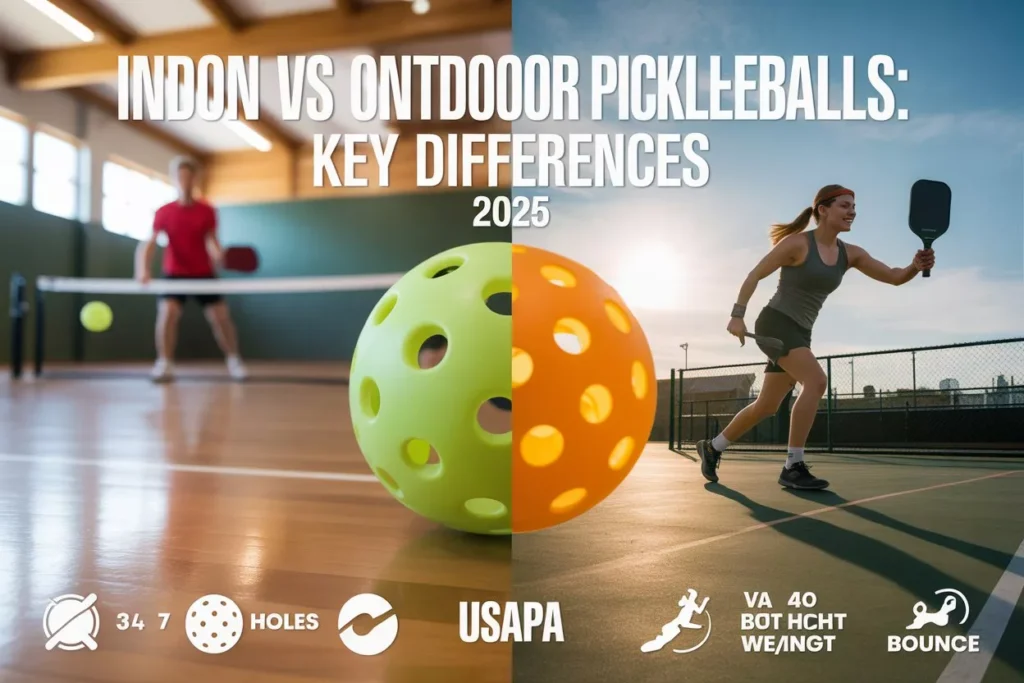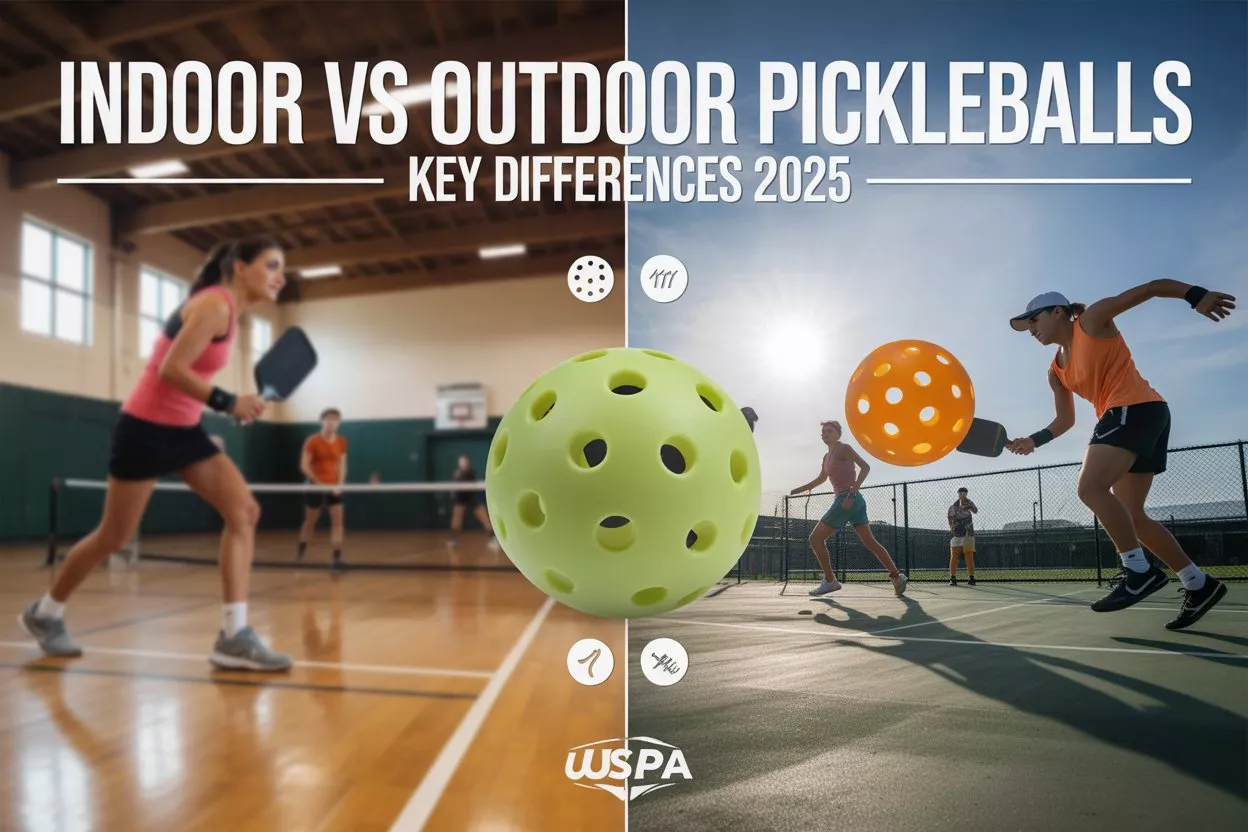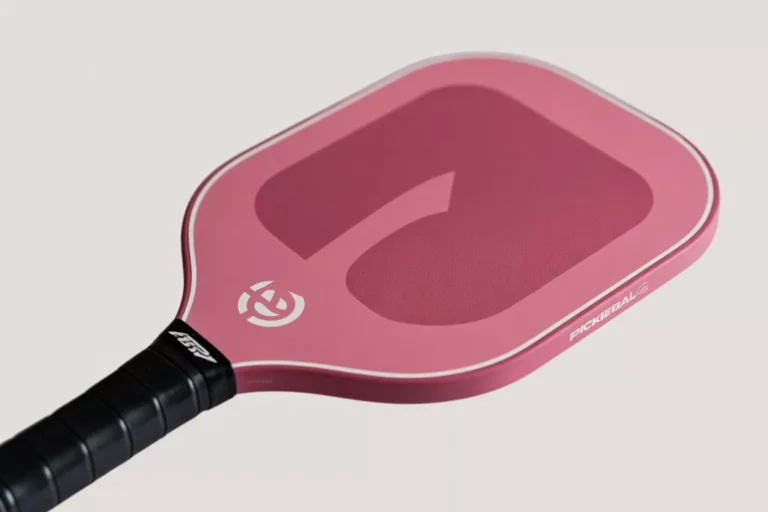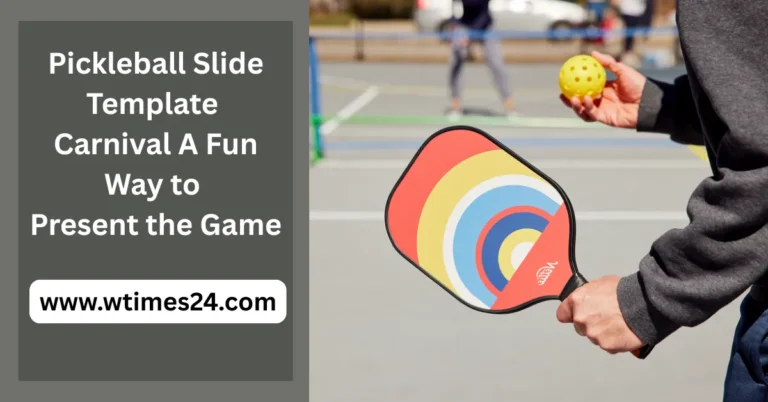Difference Between Indoor and Outdoor Pickleballs: Ultimate 2025 Guide & Expert Tips
In the ever-growing world of pickleball—now boasting over 40 million players in the U.S. as of 2025—the choice between indoor and outdoor balls can significantly impact your game. The difference between indoor and outdoor pickleballs lies in their design, performance, and suitability for specific environments, affecting everything from bounce to durability. Whether you’re a beginner navigating your first match or an advanced player fine-tuning strategy, understanding these distinctions ensures optimal play. This 2025 guide breaks down the key variances, explores related factors like court sizes and paddle compatibility, and provides actionable advice to elevate your experience. We’ll cover myths, best recommendations, and more, drawing from USAPA standards and player insights to help you choose wisely.
Key Takeaways on the Difference Between Indoor and Outdoor Pickleballs
- Hole Count and Size: Indoor balls have 26 larger holes for softer flight and reduced bounce, while outdoor balls feature 40 smaller holes for wind resistance and stability.
- Weight and Hardness: Indoor pickleballs are lighter (0.8-0.9 oz) and softer for controlled indoor play; outdoor versions are heavier (0.9-1.0 oz) and harder to withstand elements.
- Bounce and Durability: Indoor balls offer lower, quieter bounce but wear faster outdoors; outdoor balls bounce higher and last longer in harsh conditions.
- Best Use Cases: Use indoor balls for gym or wood floors to avoid damage; outdoor balls excel on asphalt or concrete for consistent performance.
- 2025 Trends: Hybrid balls are emerging for versatile play, with eco-friendly materials reducing plastic waste in both types.
These takeaways highlight how the right ball enhances safety, enjoyment, and skill development.
Understanding Pickleball Balls: Basics and Evolution in 2025
Pickleball balls are perforated plastic spheres designed for the sport’s unique blend of tennis, badminton, and ping-pong. Made from durable polymers, they must meet USAPA standards: 2.87-2.97 inches diameter, 0.78-0.935 oz weight, and specific hole patterns. In 2025, advancements include recycled materials for sustainability and enhanced grip textures for better spin.
The core difference between indoor and outdoor pickleballs stems from environmental demands. Indoor versions prioritize quiet, controlled play in enclosed spaces, while outdoor ones combat wind, sun, and rough surfaces. Misusing them—such as using outdoor pickleballs indoors—can lead to erratic bounce or court damage, as noted in player forums. For those asking about indoor pickleballs, they’re crafted for smooth surfaces like gym floors, offering a softer feel that reduces noise and joint strain.
According to 2025 USAPA updates, balls must pass rigidity tests, with indoor types flexing more for safety. This evolution reflects pickleball’s growth from backyard game to professional sport, with global sales topping $500 million annually.
Hole Design: The Core Structural Difference
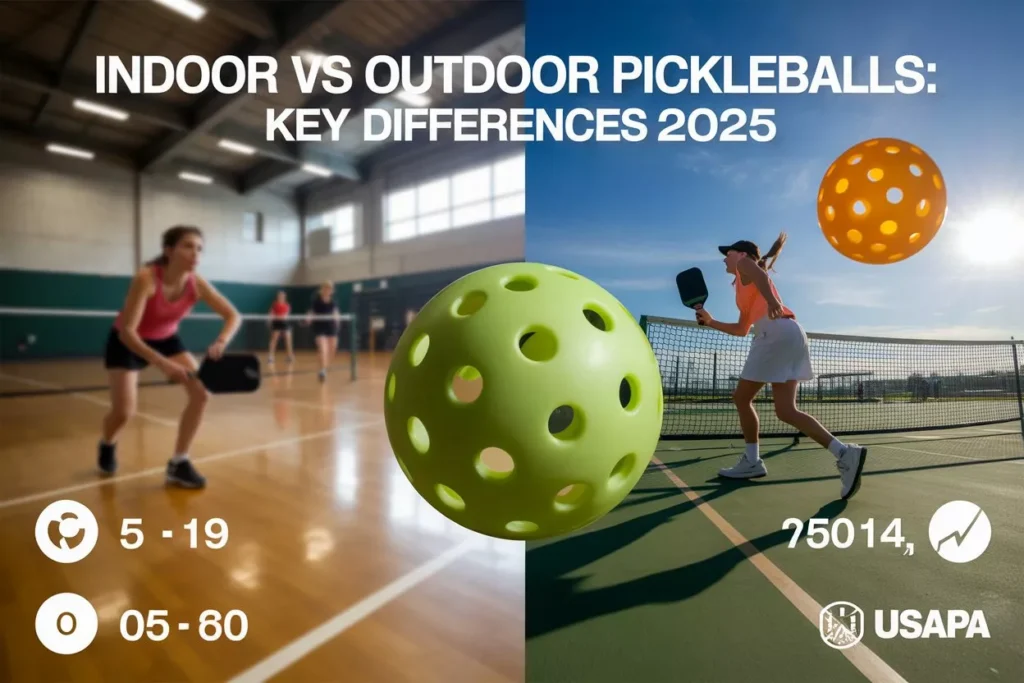
One of the most visible variances is hole configuration. Indoor pickleballs typically have 26 larger holes (0.125-0.15 inches diameter), allowing more air flow for a slower, softer trajectory. This design minimizes bounce on hard indoor floors, promoting longer rallies and precision shots.
In contrast, outdoor balls boast 40 smaller holes (0.1-0.125 inches), reducing wind drag for consistent flight in gusty conditions. How many holes in an outdoor pickleball? Exactly 40, per USAPA rules, ensuring stability on asphalt or concrete. This setup makes outdoor balls fly straighter but bounce higher, demanding quicker reflexes.
From a Difference between indoor and outdoor pickleballs reddit thread, players note indoor holes create a “whistling” sound, while outdoor’s tighter pattern is quieter in wind. For visual clarity,
Indoor vs Outdoor Pickleballs: 5 Major Differences – Paddletek …
This structural gap affects everything from speed to lifespan—indoor balls crack faster outdoors due to UV exposure.
Weight and Hardness: Impact on Playability
Weight is another key differentiator. Indoor pickleballs weigh 0.8-0.9 oz, making them lighter for faster indoor play without excessive bounce. Their softer plastic (durometer rating 40-50) absorbs impact, reducing noise in gyms—ideal for urban leagues where sound complaints are common.
Outdoor balls, at 0.9-1.0 oz, are heavier to cut through wind, with harder plastic (durometer 50-60) for durability against cracks from rough surfaces. This hardness leads to a louder “pop” and higher bounce, suiting outdoor courts.
Using outdoor pickleballs indoors can cause excessive bounce and court scuffs, as per indoor vs outdoor ball urban Dictionary entries calling it a “rookie mistake.” Conversely, indoor balls outdoors fly erratically in breeze. 2025 innovations include weighted hybrids for versatile use, blending both worlds.
Bounce and Speed: How Environment Influences Performance
Bounce height varies dramatically. Indoor pickleballs bounce 32-34 inches from a 78-inch drop on wood floors, promoting controlled rallies in enclosed spaces. Their softer material dampens speed, allowing for strategic dinking and volleys.
Outdoor balls bounce 35-37 inches on concrete, with firmer construction enabling faster speeds (up to 40 mph serves). Wind resistance keeps them stable, but they wear faster indoors due to softer landings.
From a Difference between indoor and outdoor pickleballs reddit discussion, users report indoor balls feel “floaty” outdoors, while outdoor ones “slam” indoors. For best indoor pickleball balls, opt for Dura Fast 40 (softer variant) or ONIX Fuse—both USAPA-approved for quiet play.
Durability and Lifespan: Which Lasts Longer?
Durability favors outdoor balls, built to endure UV rays, rain, and rough asphalt—lasting 200-300 games before cracking. Indoor balls, softer for comfort, degrade faster outdoors (50-100 games) from exposure.
In 2025, eco-friendly options like recycled plastic extend lifespan for both, reducing environmental impact. Storage tip: Keep indoor balls in cool, dry places to prevent warping; outdoor ones in bags to avoid scuffs.
Usage Scenarios: When to Choose Indoor or Outdoor
When should you use an indoor pickleball? For gym or wood courts, where softer bounce and quieter play prevent noise issues and enhance control—perfect for beginners or leagues.
Outdoor balls shine on asphalt/concrete, resisting wind for consistent flights during tournaments or park play. Are indoor and outdoor pickleball courts the same size? Yes, standard 20×44 feet for doubles, but surface texture (smooth indoor vs. grippy outdoor) affects ball behavior.
Myth busted: Using outdoor pickleballs indoors isn’t ideal—higher bounce can lead to faults. Indoor vs outdoor pickleball paddles also play a role; lighter paddles suit indoor balls for finesse, heavier ones pair with outdoor for power.
Best Indoor Pickleball Balls in 2025: Top Recommendations
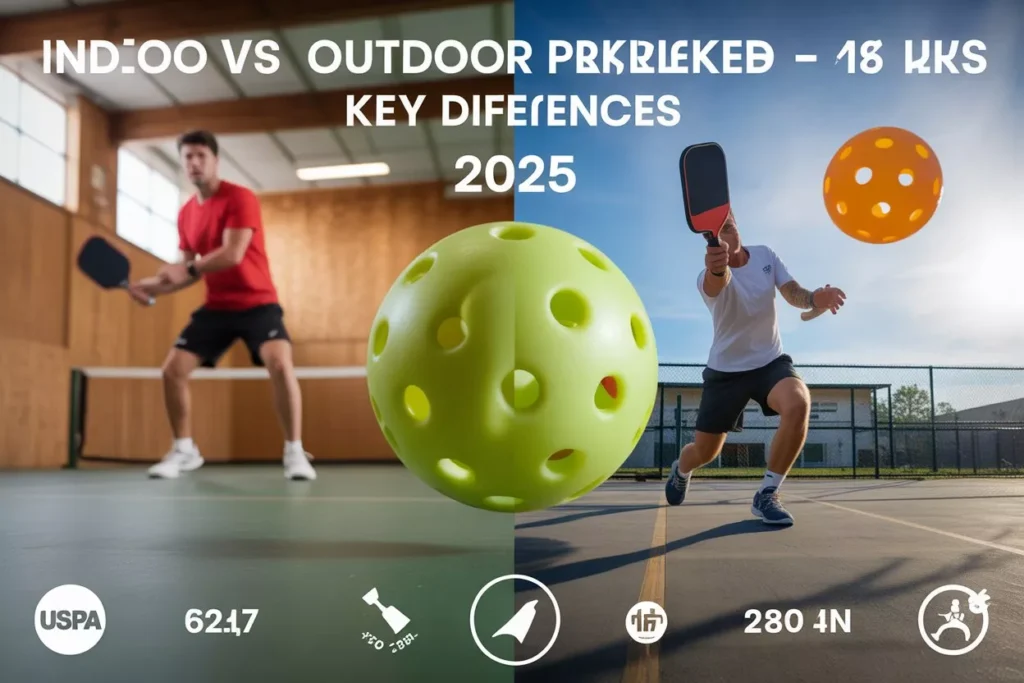
For indoor play, here are 2025’s best:
- Dura Fast 40 Indoor: $12 for 3; soft plastic, 26 holes, quiet bounce—USAPA-approved for leagues.
- ONIX Fuse Indoor: $10 for 3; durable polymer, even flight—great for beginners.
- Gamma Photon Indoor: $15 for 6; glow-in-dark option for low-light gyms.
These prioritize control and longevity, per player feedback.
2025 Trends and Innovations in Pickleball Balls
2025 brings hybrid balls with adjustable hardness for dual use, reducing the need to switch. Eco-materials cut plastic waste, and smart balls with sensors track spin (app-linked). For indoor, noise-reducing coatings are trending; outdoor, UV-resistant colors prevent fading.
From Difference between indoor and outdoor pickleballs reddit threads, players demand more affordable hybrids—expect $8 packs by year-end.
Comparison Table: Indoor vs Outdoor Pickleballs
| Feature | Indoor Pickleballs | Outdoor Pickleballs |
|---|---|---|
| Hole Count | 26 larger (0.125-0.15 in) | 40 smaller (0.1-0.125 in) |
| Weight | 0.8-0.9 oz | 0.9-1.0 oz |
| Hardness | Softer (durometer 40-50) | Harder (durometer 50-60) |
| Bounce Height | 32-34 in (from 78 in drop) | 35-37 in (from 78 in drop) |
| Durability | 100-200 games (indoors) | 200-300 games (outdoors) |
| Best For | Control, quiet play in gyms | Wind resistance, power on concrete |
| Cost (per 3-pack) | $10-15 | $8-12 |
| 2025 Innovations | Noise-reducing coatings | UV-resistant colors |
This table summarizes core differences for quick reference.
Conclusion: Choose the Right Pickleball for Your Game
The difference between indoor and outdoor pickleballs boils down to design tailored for environments—indoor for control and quiet, outdoor for durability and stability. With 2025 innovations like hybrids, players have more options than ever. Whether at Montecito Heights or your local court, the right ball elevates your experience. Grab a pack, hit the court, and see the difference yourself.
Frequently Asked Questions (FAQs)
How do you tell the difference between indoor and outdoor pickleballs?
Look at holes: Indoor have 26 larger ones for softer flight; outdoor feature 40 smaller for wind resistance. Indoor are lighter/softer, outdoor heavier/harder—check labels for “indoor” or “outdoor.”
Can I use outdoor pickleballs indoors?
Yes, but not ideal—higher bounce and louder pop can disrupt play and scuff floors. Stick to indoor for control; hybrids are emerging for versatility in 2025.
Why do indoor pickleballs have larger holes?
Larger holes (26 vs. 40) allow more air flow, creating softer, lower bounce for controlled indoor play on smooth surfaces, reducing noise and joint strain.
When should you use an indoor pickleball?
Use indoor pickleballs on gym/wood floors for quiet, precise games—perfect for beginners, leagues, or winter sessions. Avoid outdoors to prevent erratic flight.
